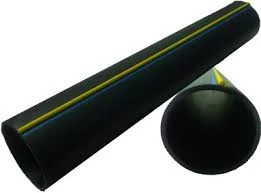Dec . 01, 2024 13:44 Back to list
ppr pipe fitting
Understanding PPR Pipe Fittings A Comprehensive Guide
In the world of plumbing, choosing the right materials for piping systems is crucial for ensuring durability, efficiency, and longevity. Among the various options available, PPR (Polypropylene Random Copolymer) pipe fittings have gained immense popularity in recent years. This article will delve into the specifics of PPR pipe fittings, examining their properties, advantages, applications, and installation methods.
What are PPR Pipe Fittings?
PPR pipe fittings are components used to connect sections of PPR pipes within plumbing and industrial systems. Made from a type of thermoplastic known as polypropylene, these fittings are specifically designed for the efficient transport of water and other fluids. They are characterized by their exceptional strength, chemical resistance, and lightweight properties, which make them a preferred choice for both residential and commercial applications.
Properties of PPR Pipe Fittings
PPR fittings exhibit several distinct properties that contribute to their effectiveness. Firstly, they have a high melting point, typically around 140°C (284°F), which allows them to be used in hot water applications without the risk of deformation. Additionally, PPR fittings are resistant to scaling and corrosion, ensuring that they maintain their integrity over time, even in harsh environments.
Moreover, PPR fittings possess excellent thermal insulation properties, reducing the risk of heat loss during transit. They are also non-toxic and environmentally friendly, making them a safe choice for potable water systems. Finally, their flexibility in design allows for a wide range of fittings, including elbows, tees, adapters, and more, to accommodate various plumbing configurations.
Advantages of PPR Pipe Fittings
The advantages of using PPR pipe fittings are numerous. One of the most significant benefits is their longevity; PPR fittings can last over 50 years when properly installed. This longevity reduces the need for frequent replacements, thus saving both time and resources in the long run.
Costs are another factor where PPR piping systems shine. Although the initial investment may be higher than other materials like PVC or metal, their durability and low maintenance requirements often lead to cost savings over the system's lifespan. Moreover, PPR fittings can be easily welded together, which not only simplifies the installation process but also results in fewer potential points of leakage.
ppr pipe fitting

Furthermore, PPR items are lighter than their metal counterparts, making transportation and installation easier. The ease of handling reduces labor costs and time, making PPR systems a practical choice for contractors and builders.
Applications of PPR Pipe Fittings
PPR pipe fittings are versatile and are commonly used in various applications. They are widely employed in residential plumbing systems for both hot and cold water supply lines. Their resistance to temperature fluctuations makes them an excellent choice for heating systems as well, such as underfloor heating and radiator connections.
In commercial settings, PPR fittings find use in plumbing systems of hospitals, schools, and hotels. Their non-toxic nature makes them suitable for potable water applications, ensuring safe drinking water for users. Additionally, PPR fittings are also utilized in industrial settings, particularly in the chemical and food processing industries, where chemical resistance is crucial.
Installation of PPR Pipe Fittings
The installation of PPR pipe fittings requires specific techniques to ensure a secure and leak-free system. Fusion welding is commonly used, which involves heating both the fitting and the pipe until they melt slightly, and then joining them together. This method results in a strong bond that integrates the components seamlessly.
Before installation, it is essential to ensure that all surfaces are clean and free from debris. Proper alignment and support of the pipes during the installation process are also crucial to avoid stress on the fittings. Once completed, any joints should be tested for leaks before the system is placed into operation.
Conclusion
In conclusion, PPR pipe fittings represent a modern, efficient solution for a variety of plumbing needs. Their combination of durability, cost-effectiveness, and ease of use makes them an ideal choice for both residential and commercial applications. As plumbing technology continues to advance, the use of PPR fittings will likely become even more widespread, ensuring systems that are efficient, reliable, and safe for years to come.
-
High-Quality PPR Pipes and Fittings Durable ERA PPR & PVC PPR Solutions
NewsJul.08,2025
-
Black HDPE Cutting Board - Durable, Non-Porous & Food Safe HDPE Plastic Cutting Board
NewsJul.08,2025
-
High-Quality CPVC Panel Durable HDPE & PVC Panels Supplier
NewsJul.08,2025
-
Double PE Welding Rod Supplier - High Strength, Durable & Versatile Welding Solutions
NewsJul.07,2025
-
High-Quality PVC-O Pipe Supplier Durable 75mm PVC Pipe & Connections Leading PVC Pipe Company
NewsJul.07,2025
-
HDPE Drainage Pipe Supplier – Durable & Corrosion-Resistant Solutions
NewsJul.06,2025

